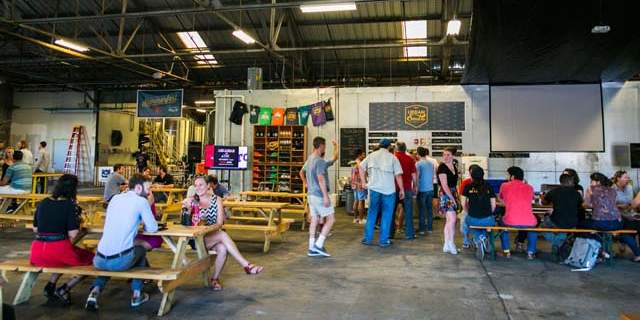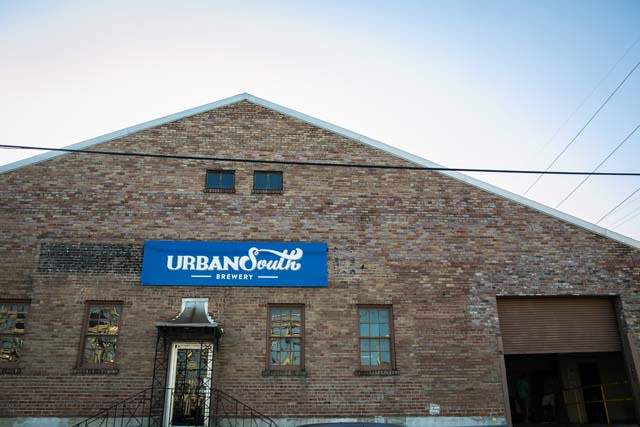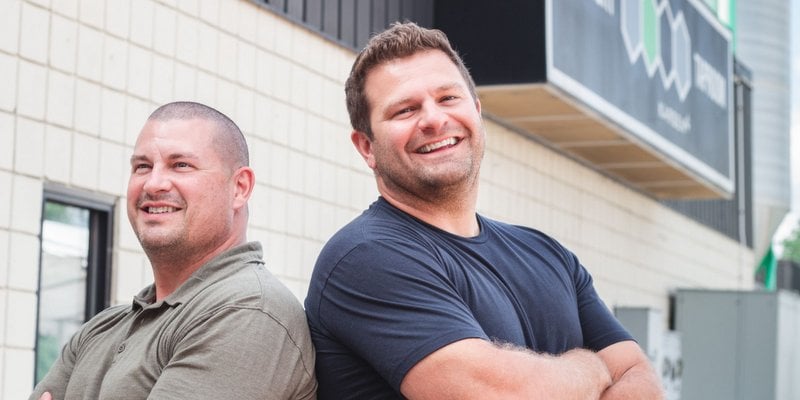
This wasn’t the plan at the beginning, according to Jacob Landry, founder of New Orleans-based Urban South Brewing. Well, the success was, but not the way there.
“We wanted a 30-bbl brewhouse and to be canning from day one,” Landry said. “We wanted to expand regionally via distribution. We’ve definitely had to evolve as the landscape has shifted.”
Upon opening in 2016, Urban South was ready to follow the well worn formula of opening a brewery, brewing the beer they dreamed of brewing and getting onto shelves as soon as possible. Now Urban South, which will brew 15,000 to 18,000 bbls this year, has a much bigger focus on direct-to-consumer sales, which, to be fair, wasn’t exactly possible in Louisiana until they changed state regulations in 2015 to allow more taproom sales.
We met Landry at a coffee shop during the Craft Brewers Conference to chat about the brewery’s upcoming expansion in Houston — its first venture outside of Louisiana — with a 10-bbl system, a canning line and public taproom and beer garden set to open in fall 2019. It is a modest move on its own, but reflective of craft beer’s most sweeping trend: successful, mid-size indie breweries expanding to new markets via physical space versus shelf space.
“We could just launch distribution in Houston, but it wouldn’t be sustainable long-term without a strong local presence and organic growth,” Landry said.
Location, location, location

Only so many breweries can sell to a larger beer corporation or take on a ton of investors and scale up enough to make a buck distributing these days considering:
- Retail sales are showing diminishing returns with so many competing breweries and amid Game of Thrones-style maneuvering from macro beer companies (craft included).
- The booming business (on way better margins) of taproom sales.
Landry cited Modern Times Beer as one of his inspirations in pursuing this strategy. Modern Times Beer, an employee-owned craft brewery that opened in San Diego in 2013, has expanded across southern California, boldly opening a location in Los Angeles and is finalizing details on an Oakland taproom, according to SFGate.
But there are many more. That same day in Denver, after chatting with Landry and hitting the BrewEXPO, we ventured to Thirsty Monk Brewery to try an amazing new sour blend and heard the same story. Thirsty Monk has slowly but surely sprawled across the country with a physical presence, currently with locations in Denver, Asheville and Portland, Ore. Currently all of its beer is sold on-premise at its taprooms.
“We actually never had a plan to grow Thirsty Monk through a traditional distribution model,” said Barry Bialik, owner of Thirsty Monk. “What we wanted to do was right size our brewery operation with the right amount of taprooms to be able to sell the majority of our beer direct to our pub visitors. We originally looked at putting a larger brewery in Asheville and ran the numbers and saw we would have to open up close to 10 new Thirsty Monk taprooms to be able to go through that much beer and keep a healthy variety of beer taps.”
Thirsty Monk is running a 7-bbl system in Asheville and a 12-bbl system in Denver, and Bialik said having the two smaller systems allows them to brew a wider variety of beer.
“It allows us to grow our simultaneous tap offerings to over 20, and still be able to go through each batch while it is fresh,” he said.
Craft breweries today are selling experiences, vibes and culture in these taprooms as much as they are beer.
“Having our own local taprooms allows us to match our beer with the relaxed pub experience that we are all about,” Bialik said. “Thirsty Monk beers are meant to be unique and to be discussed, and our pub locations are designed to encourage you to talk with the person sitting next to you. We are not the bond-over-100-TVs-of-sports kind of place. We are all about bonding over beer and conversation.”
The original downtown Thirsty Monk basement Belgian bar look and feel was a blend of Bialik’s favorite Seattle pubs, and all Thirsty Monk locations maintain that feel. They are designed to be intimate, familiar, comfortable, relaxed and, maybe most importantly, local.
“In each of our new locations, we actually strive to be more of a local neighborhood, Belgian corner brewery rather than a tourist destination,” Bialik said. “We have selected neighborhood spots rather than core downtowns … It has been more challenging setting our Portland roots, primarily because we haven’t been able to actually brew in our taproom there. Our space in Portland has room to add a small brewery, and that was our original intention, but building issues have not allowed that to happen yet. We do have deep Northwest roots so in ways we have strong local Portland connections. Being local and authentic is very important to us.”
But still: beer, beer, beer

McDonald’s Founder Ray Kroc famously stated he was in the real estate business, not the burger business, and there’s certainly an element of that at play here, but real estate isn’t an end point. If you’re looking to sell beer locally, you better know what beer the locals want to drink.
Landry relayed a story of another popular, growing craft brewery in the northern part of the United States that was discussing its plans on expanding distribution of its killer IPAs into Louisiana. The state is a growing craft beer market to be sure, thanks in large part to the work of breweries like Urban South and the state’s largest market, New Orleans, which has more micro than macro tap handles. But the rest of the state just wants to drink light lagers. Landry was blunt with his advice to this brewery, which also proved to be correct.
“This won’t sell in Louisiana,” he said of the brewery’s IPAs, awesome as they may be. “Our consumers love IPAs, but they want softer, less bitter, New England-style IPAs like Holy Roller. Cry all you want about how it’s not a classic craft beer. You will not find a big selling West Coast IPA in New Orleans. Brew what makes sense.”
“Brew what makes sense” seems like obvious advice, but many craft breweries do not heed it in the early going. Landry and Urban South discovered this through trial and error themselves when they launched in 2016.
“I originally wanted a great Belgian Wit,” Landry told me. “I thought it would be our biggest seller. We filled two of our three fermenters with it right off the bat, and of course it was our Holy Roller IPA that sold out right off the bat. We spent our entire first year trying to keep up with demand for it. Wit is a small part of our offering now. … We also know our flagships have to sell for about $9.99 or less per six-pack. This is not a big market for four-packs. And that’s fine. We make it work — even with Paradise Park — our budget lager.”
That approachable Paradise Park lager, btw, outsold the next closest craft beer during Mardi Gras by 50 percent. This is why distributors trust Urban South, and why 85 percent of their volume is sold through their New Orleans distributor.
As Landry looks to write a new Urban South Brewery playbook in Houston, he knows he is doing so for a totally new set of customers. Instead of Paradise Park lager dominating sales, Landry is working with well-known Houston Brewer Dave Ohmer to bring creative, Houston-specific R&D beers, along with the brewery’s established lineup.
Advice (just one piece)
If you’re considering a similar way forward, here is some advice from Thirsty Monk’s Bialik.
“Get several local expansions under your belt before getting too far from home. Between new locations and expansions of existing locations we had six Thirsty Monk build out projects just in Asheville before we looked out of state. We had a lot of our design and build out process and even color palettes and furniture styles worked out when looking at new spaces. We can search for new spaces that blend well with what we have learned.
“It does also help a lot that I am a general contractor and can be part of the whole construction process. That probably has allowed us to build out spaces on much leaner budgets. There are a lot of things that come up and fast decisions that need to be made during a build out, and it is definitely more complicated when you are 2,000 miles away and can’t just pop over to put your eyes on it.”





Rick Boyd says
I’ve been expecting to see more of this for a few years now. Honestly, the traditional means of growing a brewery doesn’t really even exist any longer unless you have very deep pockets.
What’s most interesting here is the longer term impacts of selection at your local supermarkets. Those shelf slots that craft brewers fought so hard to attain are now being abandoned and are returning back to the big brewers who are filling them with “crafty” brands of their own. It’s definitely an example of an industry coming full circle.
Shawn Johnson says
Awesome Jacob Landry !
Jacob Landry says
Thanks!